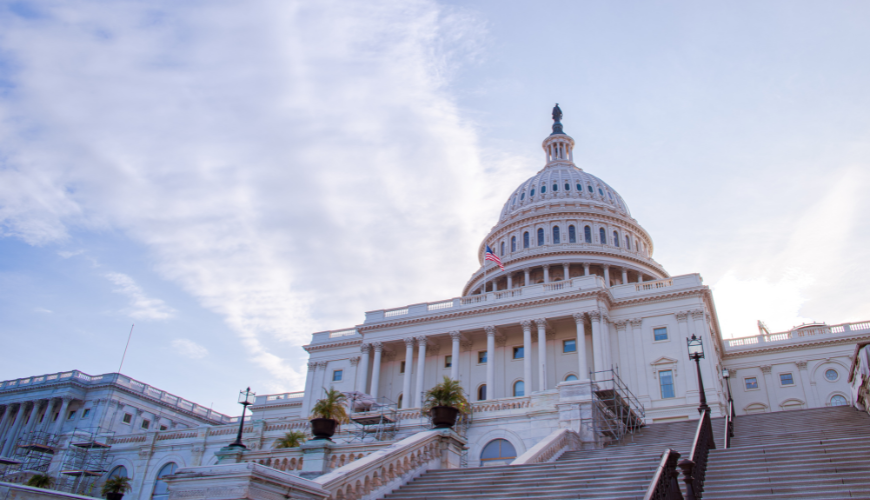
You may have heard that on December 29th President Biden signed the FY2023 Omnibus bill. This $1.7 trillion spending package includes some major wins for human health, animals, and the planet.
The FDA Modernization Act 2.0 is what we view as one of the most significant inclusions in the bill, and one of the biggest legislative advancements for human health in recent history. Included in the Omnibus bill in section 3209 titled “Animal Testing Alternatives,” the FDA Modernization Act 2.0 removes the federal mandate that required animal testing for all new drugs and biologics under the 1938 Federal Food, Drug, and Cosmetics Act. Under this new law, the prior requirement of using “pre-clinical tests (including tests on animals)” is replaced with “nonclinical tests,” which include cell-based assays, microphysiological systems like organ chips, and bio-printed or computer models.
The FDA Modernization Act 2.0 is a needed step that will help spur the development and use of modern, more effective medical testing methods. By removing the outdated animal testing requirement, drug developers can now use modern, human-relevant testing methods in place of ineffective animal tests. This is an improvement in the drug development process and is a significant step in protecting human health and reducing animal testing.
The FDA Modernization Act is just one of the promising features in the Omnibus bill. Others include language related to the establishment of the Advanced Research Projects Agency-Health, also known as ARPA-H, which is an initiative proposed by President Biden in his FY2022 budget request. ARPA-H is a new agency formed under the National Institutes of Health (NIH) umbrella with the goal to foster the development of novel technologies to accelerate innovation in biomedical science and to revolutionize the diagnosis, mitigation, treatment, and cure of diseases and health conditions. While ARPA-H is not explicitly dedicated to human-relevant models, as an organization with an enhanced focus on the development and use of novel methodologies, it can be a catalyst to push these models toward more widespread acceptance.
In addition to the establishment of ARPA-H, the Omnibus includes specific language related to the review and funding of research proposals that would include animal testing. The language requires the Comptroller General of the United States to assess the animal testing supported by NIH. It specifies that this assessment shall consider whether the results of NIH-reviewed proposals using animals are “reasonably anticipated to be reproducible and replicable.” This language reinforces existing requirements under the Health Research Extension Act and Public Health Services Policy that NIH should be considering whether or not certain methodologies using animals are necessary. We agree that any effort that can increase transparency on NIH’s assessments and criteria for funding animal testing is a move in the right direction.
The Omnibus includes language that creates stronger enforcement of the Animal Welfare Act (AWA). Specifically, the language places a permanent prohibition on the licensing of Class B dealers who sell cats and dogs acquired from random sources (Animal Welfare Act, sec. 733). These animals are often sold to be used in experimentation Additionally, the US Department of Agriculture (USDA) personnel are required to record any observed violations of the AWA in USDA-operated laboratories on official reports (secs. 750 & 756). Previously, USDA personnel were only required to report “serious noncompliance.” The language now stipulates that USDA personnel will not be paid unless they record all violations of the AWA on official documents.
Beyond specific requirements, section 3507 of the Omnibus includes Congress’ “current sense” on cosmetic testing on animals. “Current sense” represents the overall opinion of Congress on a certain issue, but does not change any existing regulations or policies. In regards to cosmetic testing, Congress stated their “current sense” is that “animal testing should not be used for the purposes of safety testing on cosmetic products and should be phased out” with certain exceptions. While this language does not place a ban on animal testing for cosmetics and does not lay out a timeline for phasing out of such testing, it does pave the way for greater use of human-relevant methodologies in safety and toxicity testing.
The Omnibus bill and accompanying report language by the House appropriations committees show a congressional commitment to continue moving away from animal testing and towards a more human-relevant focus in biomedical and safety testing. See below to read about other outcomes the accompanying report includes that will help move us in a positive direction for humans, animals, and the planet.
Additional Positive Outcomes:
House Agriculture Appropriations Report Language:
Predictive Toxicology Roadmap:
The FDA is directed to report on its “progress related to reliability, reproducibility, and development related to new alternative methods and the evaluation of the methods with which FDA is, or has been, involved.”
House Interior/Environment Appropriations Report Language:
EPA is directed to “publish information regarding New Approach Methods, including submissions that are currently being evaluated and those that have been rejected,” as well as include specific “goals that reflect the current regulatory landscape and outline the necessary steps to reduce animal testing…”
House Labor and Health and Human Services Report Language:
In 2000 Congress passed the CHIMP Act intending for chimpanzees owned by NIH to retire to sanctuaries. Despite the Act, 95 chimpanzees have not been transferred to Chimp Haven, the national sanctuary. This new language directs NIH to reassess the retired chimpanzees being housed at facilities other than a sanctuary and to provide a written report each quarter on the number of chimpanzees being transported to national sanctuaries. NIH is also required to conduct a census of the government-owned chimpanzees that have not been transported to a sanctuary.
NIH is directed to establish “incentives to encourage investigators to utilize non-animal methods whenever appropriate for the research question and establish standardized guidelines for peer review evaluation of the justification for research with animals.”
Interagency Coordinating Committee on the Validation of Alternative Methods (ICCVAM):
ICCVAM is urged to provide an update related to the establishment of an ICCVAM workgroup to develop metrics that can be used by member agencies to assess progress made toward reducing, refining, or replacing animal use in testing.

